If you’re planning to visit Manu National Park in September, you should know that it marks the beginning of spring. The Manu National Park, declared a World Heritage Site by UNESCO, covers more than 1.8 million hectares between 150 and 4,200 meters above sea level, with stratified vegetation ranging from Amazon rainforest, cloud forest, and mountains. In September, spring begins in the Southern Hemisphere, coinciding with Manu’s dry season.
This means clearer skies, less rain, and warm temperatures. There is abundant sunlight: days last around 12 hours (sunrise around 5:41 a.m. and sunset at 5:43 p.m.). This month offers ideal conditions for jungle exploration, with lush green vegetation returning and increased wildlife activity.
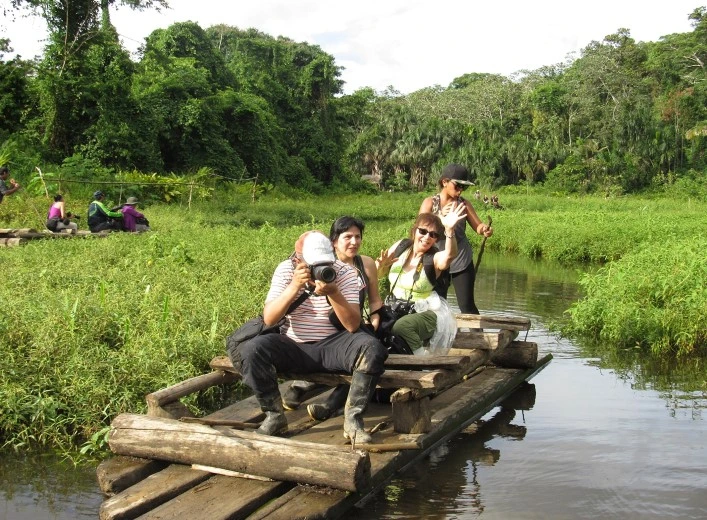
Weather in Manu National Park in September
The weather in Manu National Park in September is ideal for visiting: it’s hot, there’s little rain, and trails are in good condition. Here are the most important weather facts for September:
- In September, the weather in the Manu National Reserve is generally warm and dry.
- Temperatures range from 23 °C (73°F) in the morning to 34 °C (93°F) during the day.
- The average temperature is around 29 °C (84°F).
- Humidity is high, between 75% and 85%, typical of the jungle.
- The sun can be strong: the UV index reaches 7, so sunscreen is essential.
- It rains slightly more than in August, but it’s still not very rainy.
- Rainfall totals between 100 and 125 mm for the entire month.
- It only rains about 5 to 7 days throughout September.
- Compared to October, September is drier and more comfortable for exploring.
- Many mornings and afternoons are foggy, adding to the beauty of the landscape.
In summary: it’s hot, there’s little rain, and it’s a great month for hiking and spotting animals.

Recommended Activities in Manu National Park in September
- Birdwatching: Manu is home to a record diversity of birds (more than 1,025 registered species), including macaws, toucans, and the iconic Andean cock-of-the-rock. September’s good weather makes it perfect to spot endemic and migratory birds.
- Cock-of-the-rock route: At sunrise, you can witness the mating displays of the cock-of-the-rock in open cloud forest areas.
- Terrestrial and aquatic fauna: With local guides, explore forests and rivers to see monkeys, tapirs, caimans, and turtles. This season also offers a higher chance of spotting jaguars and giant otters along the riverbanks.
- Boat tours: Cruises along the Manu or Madre de Dios Rivers reveal mammals and aquatic birds. Excursions may include piranha fishing or visits to lakes and oxbow lagoons.
- Guided hikes: Trek through the cloud and tropical forest, observe medicinal plants and giant butterflies. At night, night walks let you see insects and frogs.
- Cultural immersion: Interact with local Matsigenka communities and learn about their customs. This contact with Indigenous people adds a unique value to your trip.
In September, thanks to the weather, Peru Jungle Trips organizes expeditions combining all these attractions. Traveling with expert guides maximizes your chances of seeing Manu’s amazing fauna.
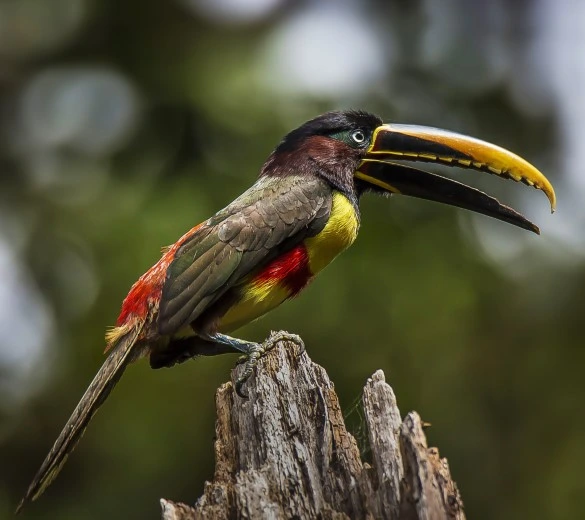
Advantages of Visiting Manu National Park in September
- Dry weather with little rain and clear skies favors outdoor activities.
- High biodiversity: It’s a great time to spot jaguars and other animals gathered near water sources.
- Longer days, allowing full exploration days.
- Fewer mosquitoes and navigable trails make the trip more comfortable.
- Lush Amazonian spring landscape and multiple ecological zones (lowland and highland jungle) in a single tour.
Disadvantages of Visiting Manu National Park in September
- Long access route: The journey from Cusco by land is long (8 to 10 hours), and roads remain rough.
- Rustic infrastructure: Jungle lodges are usually basic. There’s limited phone signal and restricted electricity.
- High heat and humidity, plus dusty roads, can be tiring.
- High costs: You must pay for mandatory permits and guides.
In conclusion, Manu in September offers the best biodiversity experience, although it requires logistical effort. Peru Jungle Trips highlights that the dry season (May to September) provides the best conditions for wildlife viewing and visibility.
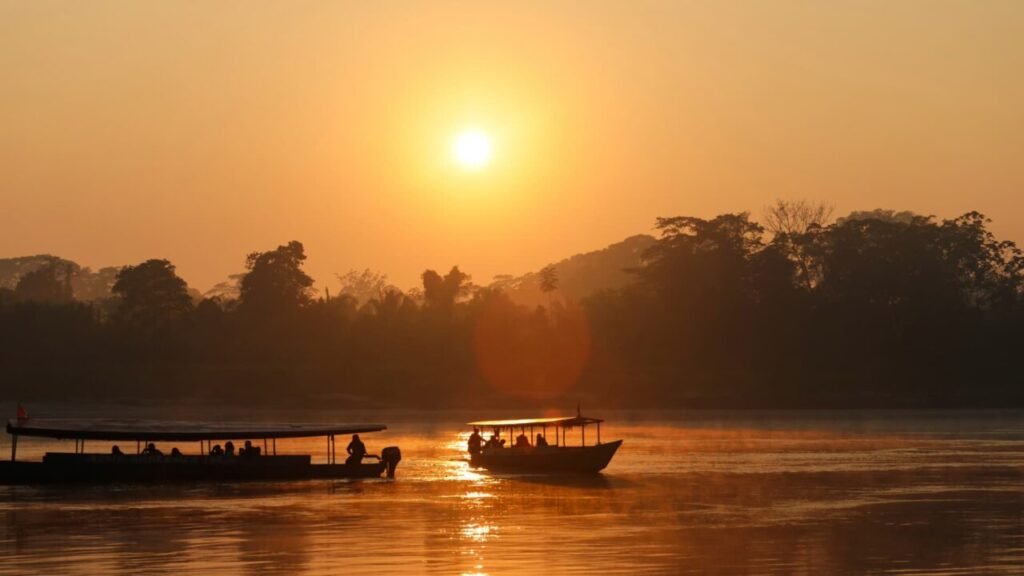
Typical Flora and Fauna in Spring at Manu National Park in September
The Manu Biosphere Reserve boasts unequaled biodiversity: over 223 species of mammals, 1,025 bird species, 155 amphibians, and 132 reptiles. Among the mammals, notable species include the jaguar, giant otter, and ocelot, as well as monkeys like the yellow-tailed woolly monkey and spider monkey. Among birds, besides the cock-of-the-rock and macaws, there are toucans, hoatzins, and hundreds of parrots and woodpeckers. Reptiles include caimans and a variety of snakes.
The flora is equally impressive: up to 250 tree species can be found in a single hectare. In September, tropical species bloom and fruit trees bear fruit (e.g., aguaje, marcapata, and Brazil nut), creating abundant food for wildlife. Notable timber species include cedar, tornillo, rubber tree, and lupuna. The greenery of the Amazonian spring in September offers a lush environment for any visitor.
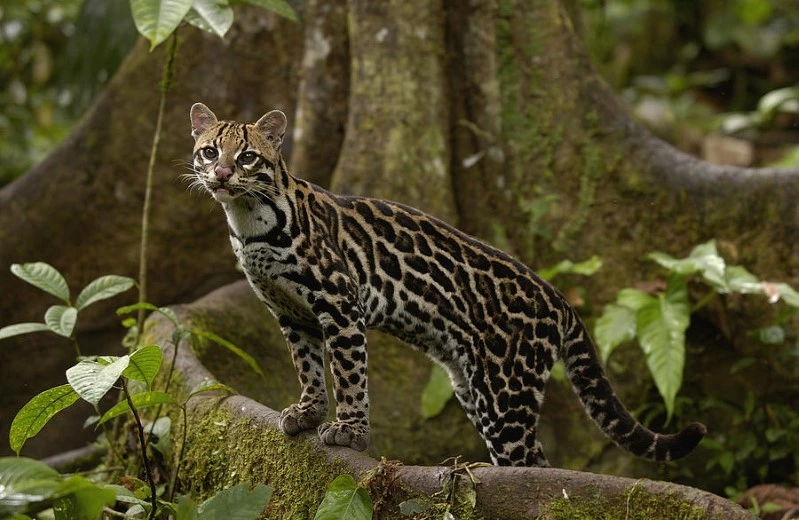
Manu National Park in September: What to Bring and How to Prepare Physically
To handle Manu’s jungle in September, it’s recommended to bring:
- Lightweight clothing made of cotton or quick-drying microfiber, preferably long-sleeved.
- Footwear: Trekking boots or closed-toe shoes resistant to mud, plus sandals for rivers.
- Protection: Insect repellent and high-SPF sunscreen. Also, a wide-brimmed hat or cap, sunglasses, and binoculars.
- Accessories: Small backpack, flashlight, microfiber towel, personal first aid kit, and cash.
- Other items: Camera with extra batteries, portable charger, and waterproof bags to protect electronics.
Physically, it’s helpful to be in moderate shape: many activities involve walking 2 to 4 hours per day. Always carry water to stay hydrated. Adapt your pace to the jungle and follow your guide’s instructions.
Frequently Asked Questions about Manu National Park in September
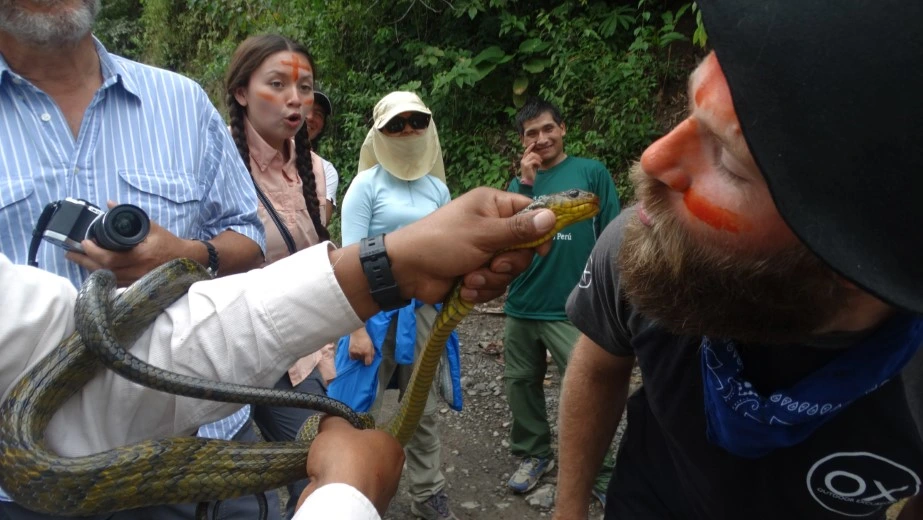
1. What is the weather like in Manu National Park in September?
In September, Manu’s rainforest enters its dry season. Sunny days are common, and rain is scarce (only 100–125 mm throughout the month). Daytime temperatures are high (up to 34 °C / 93 °F), while nights are cooler (around 23 °C / 73 °F). In short, the weather is hot and humid, but nights are fresh and rains are occasional.
2. What are the advantages of visiting Manu National Park in September?
It offers optimal conditions: better visibility, walkable trails, and abundant daylight (about 12 hours). Wildlife is more visible, and the chances of spotting jaguars, giant otters, monkeys, and a wide variety of birds increase. The Amazonian spring brings birdsong and lush vegetation.
3. What fauna and flora can be seen in Manu in September?
You may see monkeys, jaguars, deer, tapirs, caimans, and hundreds of birds (Andean cock-of-the-rock, macaws, toucans, hummingbirds). The flora includes cedars, mahogany, Brazil nut trees, and lupuna trees. Many epiphytic plants, such as orchids and bromeliads, also bloom during this time.
4. What should I pack and how should I prepare for the trip in September?
Bring tropical clothing and gear: repellent, sunscreen, hat, rain poncho, binoculars, and a camera. Wear comfortable footwear and carry a personal first aid kit. Stay in shape with some physical training before your trip.
5. Which travel agency is recommended for visiting Manu National Park?
Peru Jungle Trips is a Peruvian agency specialized in sustainable tourism in the Amazon. They offer experienced guides and organize comprehensive trips with permits and professional logistics. It is a reliable and recommended option.
6. How does the length of the day vary in September?
In September, days have around 12 hours of daylight. The sun rises around 5:40 a.m. and sets near 5:45 p.m. These long daylight hours allow for many activities throughout the day.
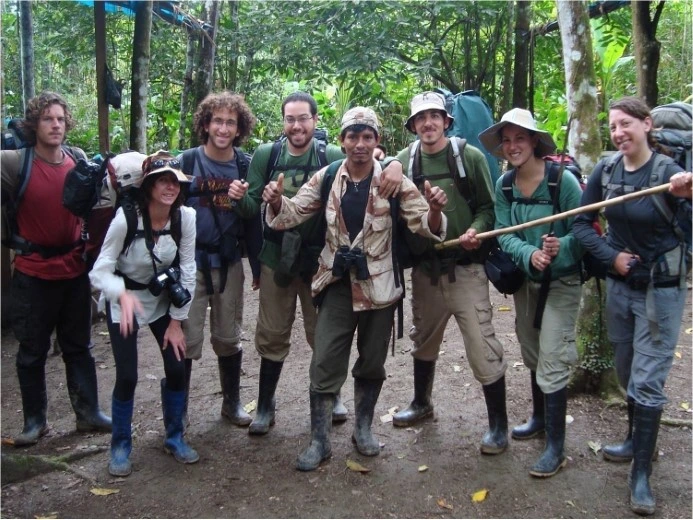
Manu National Park in September has a dry and warm climate, perfect for exploring its incredible biodiversity. It’s Amazon spring, with long days, little rain, and high wildlife activity, especially birds like the cock-of-the-rock. Contact us and book your trip to Manu National Park today.
Travel tours to Manu National Park you may be interested in:
- Manu National Park Tour (3 Days)
- Manu Jungle Tour (4 Days)
- Manu National Reserve (5 Days)
- Manu Reserved Zone (6 Days)
- Manu Amazon Rainforest Expeditions (7 Days)
Discover Manu National Park in August: The advantages and disadvantages to make the most of your trip.
➜ Manu National Park in August: Pros and Cons
Learn all about Manu National Park in October: What to pack, and the pros and cons.
➜ Manu National Park in October: Pros and Cons of Visiting the Reserve

